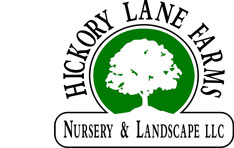Pesticides Made Simple
I apologize in advance for sending you folks to the retail store to buy chemicals. I stopped in the other day and was baffled by the choices and confusing product names. There were 15 kinds of “roundup” and one of them didn’t even contain the active ingredient for roundup! So…I’d like to take this month’s newsletter to help you by simplifying the world of pesticides. First of all, pesticides are a great work saver for us “gardeners” and I happen to know that EVERYONE wants low maintenance. Unfortunately, the buzz in the press and social media would have us believe that all pesticides are bad for us. Not necessarily so. They are tools that, when used properly, greatly reduce the seemingly impossible task of pulling weeds.
So, let’s start with some basic definitions. Pesticides kill all pests, so we need to be more specific. Insecticides kill insects. Not all garden bugs are insects so there are also miticides for mites. Today I’d like to focus on herbicides which kill herbs (weeds). Herbicides are usually very specific to certain types of weeds. There are “preemergent herbicides” (like crab grass killer and “Preen”). Preemergents kill overwintering seeds as they sprout. This type of herbicide is meant to be spread on the surface of the ground where it creates kind of dissolved “salt” layer that burns newly sprouting weed seeds. Don’t put this down if you plan on planting flower seeds or grass seed! Then there are herbicides that just kill broadleaf weeds. A broadleaf is any type of weed besides grasses. So, it’s typically used on the lawn to kill clover and dandelions. “Weed B Gone” is a typical broadleaf herbicide. You need to be aware of the active ingredient in these chemicals. It’s listed on the front of the bottle in percentages and it’s far more important than the product name. The active ingredient for killing broadleaves is normally 2,4-D. So, there are many products containing 2,4-D that you can use on your lawn. The percent of active ingredient concentration will determine the rate you’d use in a water mixture. Please read the label for this info.
Just like a selective herbicide that only kills broadleaves and doesn’t hurt grass, there are herbicides that only kill grass and don’t hurt broadleaves. This is a wonderful tool to help you rid grass from invading your ground cover beds. I’ll mention one brand because it’s easy to remember and that is “Grass B Gone”. Clever eh? Just like Weed B Gone only it’s Grass B Gone. Now there are several active ingredients and products that can kill grass so it’s best to ask at the garden store for a “selective grass killer”.
It’s simple when you understand that most of these herbicides were developed for agriculture. Farming is a MUCH bigger industry than landscaping. No company ever did all the research to develop an herbicide for landscaping. We borrow our herbicides from the products developed for agriculture. Farmers need to control corn in soybeans. Corn is a grass and soybeans are a broadleaf, hence the grass herbicide. Conversely 2,4-D kills the soybeans in corn.
The most common herbicide we use is roundup. Roundup will kill almost any green plant. It is a wonderful work saver when used properly. And, contrary to what you might read on the internet, it’s rather safe for the entire animal kingdom. The toxicity level (strength of poison) of roundup is actually less than that of vinegar or caffeine! And leaching into your lawn or streams is not a problem because roundup neutralizes on contact with dirt. Granted, if you don’t mind the work, some weeds are very easily pulled by hand. Especially after a nice rain. But others are impossible to pull, such as thistles and running grasses. Round up is the only way to get these. A little roundup goes a long way. You don’t need to soak the plant. Just wet a leaf and the poison will travel through the plant to the roots and kill it thoroughly. Don’t spray it on a windy day and adjust your nozzle to a coarse spray rather than a fine mist to avoid drift. For weeds close to a good plant you can simply brush the leaves of the good plant aside and just hit a leaf on the weed. In time, the herbicide will move in the weed to kill the roots.
Now to get back to my original point. When you go shopping for roundup, don’t be confused by all the different types. All you need is the original with the active ingredient, glyphosate. You should buy the concentrate that will be about 40-50% glyphosate. If you buy the homeowner product, you’ll see that it’s 98% water and has a little trigger handle to apply it. Don’t buy it! You’ll get carpal tunnel. Buy a little 1 or 2-gallon garden sprayer and mix it yourself. You’ll mix the concentrate at 2oz per gallon of water. Your sprayer will have a long wand, so you don’t need to bend over so far as you would with that little trigger deal.
As mentioned, I noticed on my visit that there are about 20 products called “roundup”. Some say, “long lasting” (these include a preemergent herbicide), concentrate, pro concentrate, super concentrate and there was even one for lawns which doesn’t even contain the active ingredient for “roundup”. Look at the active ingredient!!!
Here’s a tip, we actually also mix in 2 oz of 2,4-D to our mix to make it work faster. 2,4-D makes the plant grow faster which helps put the glyphosate in the roots quicker.
The reason you are seeing so many products is because the patent on glyphosate has expired so many companies are making similar products. Don’t be fooled by the advertising, the lawyer ads and the social media posts about how dangerous roundup is. Do the research if you are concerned about this.


Comments are closed.